Enabling Infrastructure for Inclusive Agrifood Systems: Evidence and Implications from the Global South
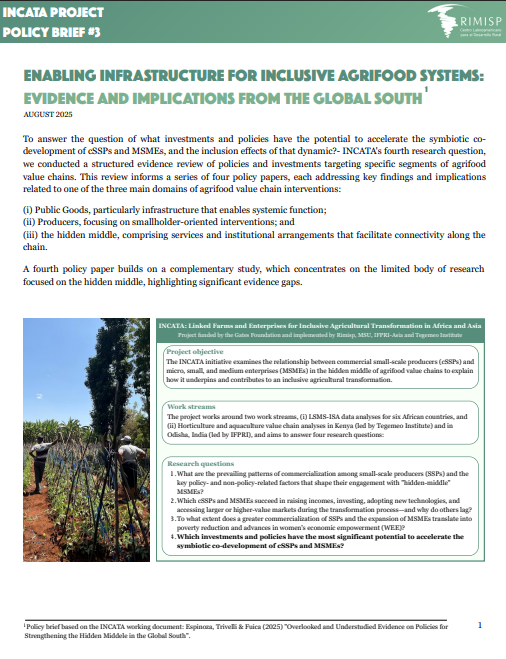
This policy paper focuses on he evidence on which policies and
investments aimed at supplying public goods that support the
entire agrifood system—from production to consumption—and
are key for inclusive agricultural transformation.
Fortalecimiento de los Productores para la Transformación Agroalimentaria: Evidencia sobre Insumos, Riego, Organizaciones e Innovación
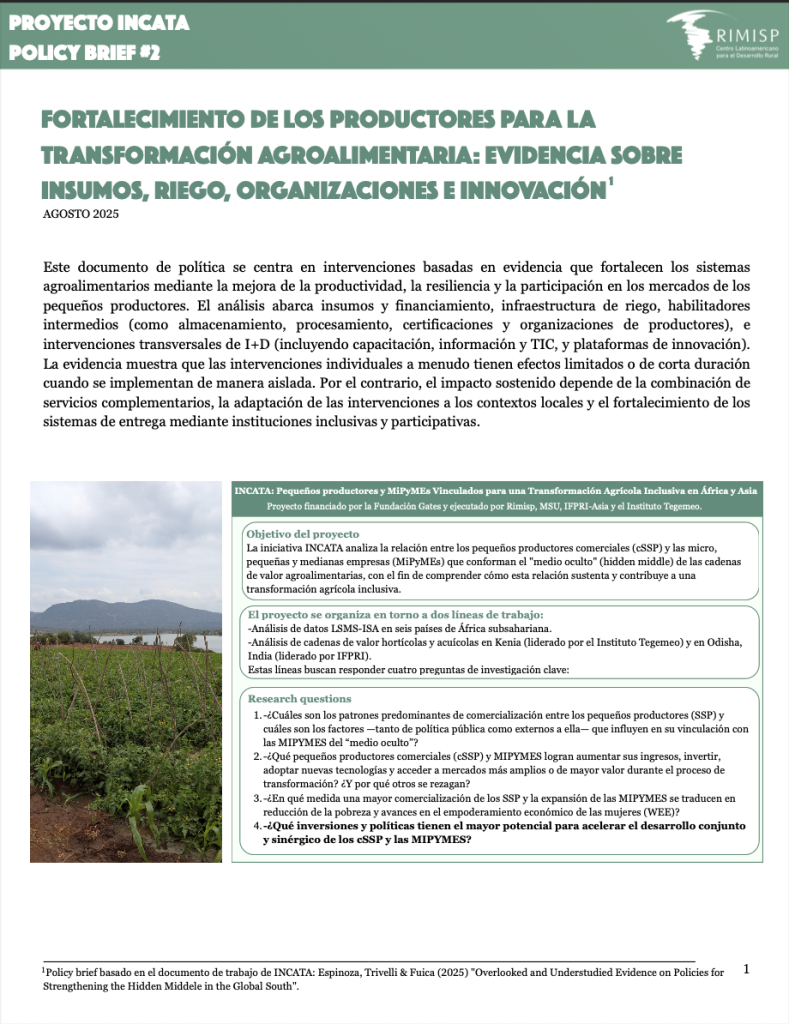
Este documento de política se centra en intervenciones basadas en evidencia que fortalecen los sistemas
agroalimentarios mediante la mejora de la productividad, la resiliencia y la participación en los mercados de los
pequeños productores. El análisis abarca insumos y financiamiento, infraestructura de riego, habilitadores
intermedios (como almacenamiento, procesamiento, certificaciones y organizaciones de productores), e
intervenciones transversales de I+D (incluyendo capacitación, información y TIC, y plataformas de innovación).
La evidencia muestra que las intervenciones individuales a menudo tienen efectos limitados o de corta duración
cuando se implementan de manera aislada. Por el contrario, el impacto sostenido depende de la combinación de
servicios complementarios, la adaptación de las intervenciones a los contextos locales y el fortalecimiento de los
sistemas de entrega mediante instituciones inclusivas y participativas.
Strengthening Producers for Agrifood Transformation: Evidence on Inputs, Irrigation, Organizations, and Innovation

This policy paper focuses on evidence-based interventions that strengthen agrifood systems by improving
productivity, resilience, and market participation among smallholder producers. The analysis covers inputs and
finance, irrigation infrastructure, midstream enablers (such as storage, processing, certifications, and producer
organizations), and cross-cutting R&D interventions (including training, information and ICT, and innovation
platforms). Evidence shows that individual interventions often have limited or short-lived effects when
implemented in isolation. Instead, sustained impact depends on bundling complementary services, tailoring
interventions to local contexts, and reinforcing delivery systems with inclusive, participatory institutions.
Vínculos perdidos: Abordando la brecha de investigación sobre el “eslabón oculto” en los sistemas agroalimentarios
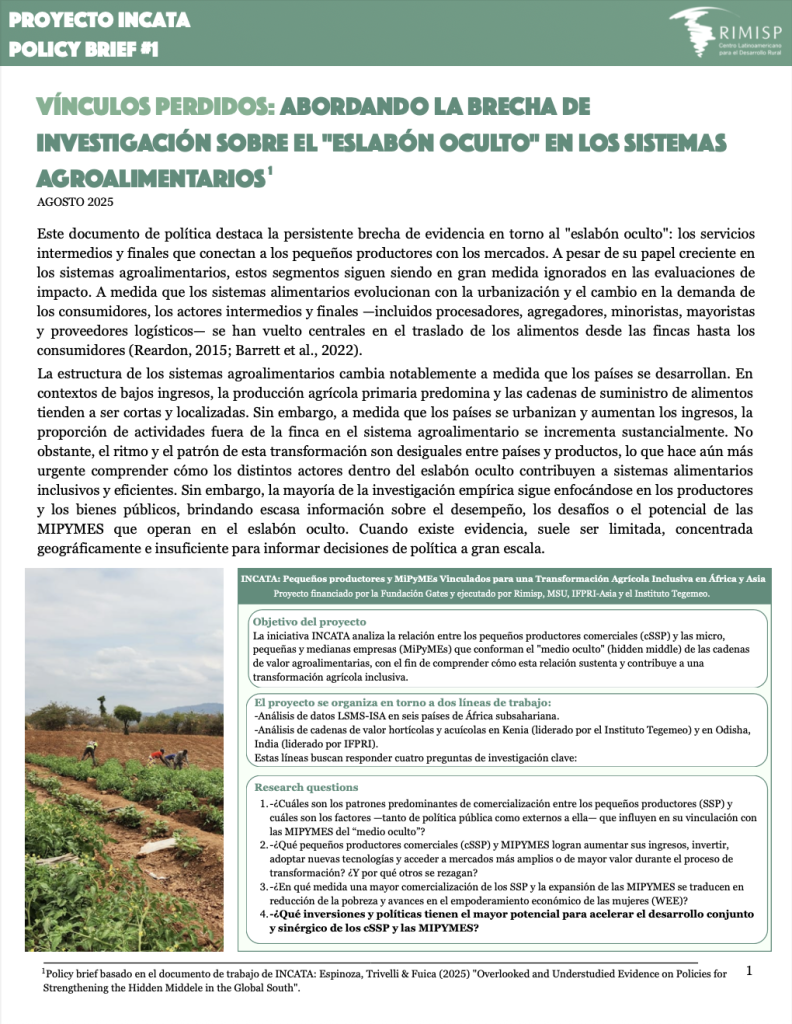
Este documento de política destaca la persistente brecha de evidencia en torno al “eslabón oculto”: los servicios
intermedios y finales que conectan a los pequeños productores con los mercados. A pesar de su papel creciente en
los sistemas agroalimentarios, estos segmentos siguen siendo en gran medida ignorados en las evaluaciones de
impacto. A medida que los sistemas alimentarios evolucionan con la urbanización y el cambio en la demanda de
los consumidores, los actores intermedios y finales —incluidos procesadores, agregadores, minoristas, mayoristas
y proveedores logísticos— se han vuelto centrales en el traslado de los alimentos desde las fincas hasta los
consumidores.
Missing Links: Addressing the Research Gap on the Hidden Middle in Agrifood Systems
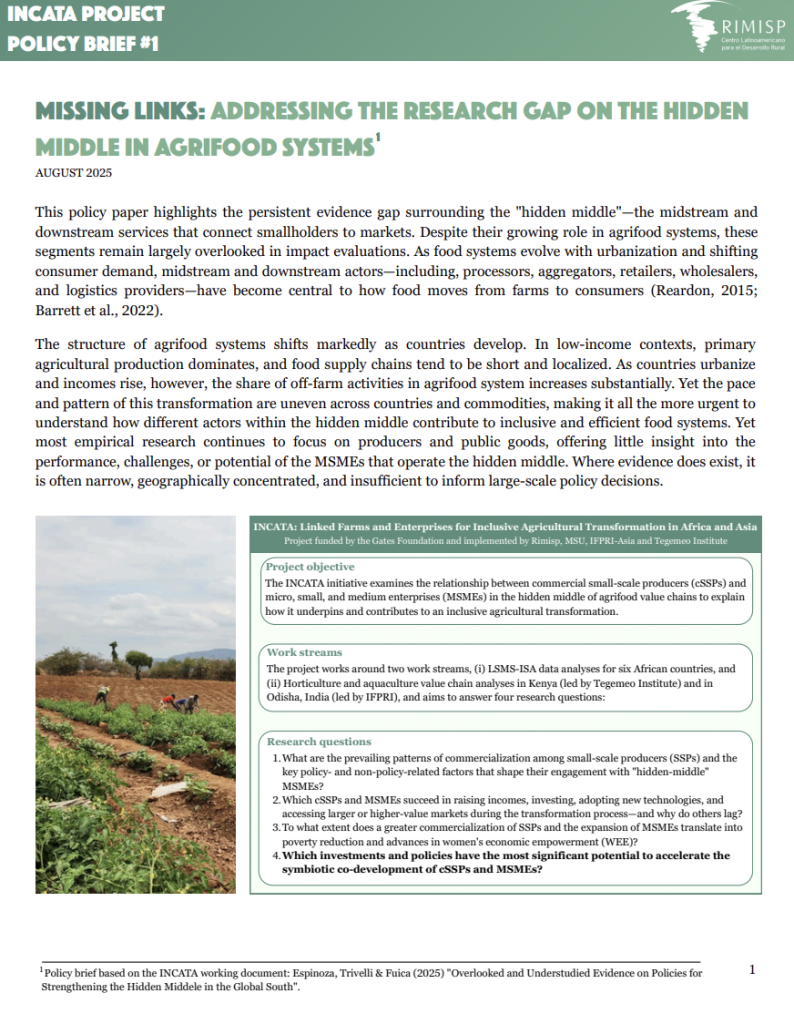
This policy paper highlights the persistent evidence gap surrounding the “hidden middle”—the midstream and
downstream services that connect smallholders to markets. Despite their growing role in agrifood systems, these
segments remain largely overlooked in impact evaluations. As food systems evolve with urbanization and shifting
consumer demand, midstream and downstream actors—including, processors, aggregators, retailers, wholesalers,
and logistics providers—have become central to how food moves from farms to consumers (Reardon, 2015;
Barrett et al., 2022).
Equipo del proyecto INCATA visita India y Kenia para realizar estudios sobre cadenas de valor
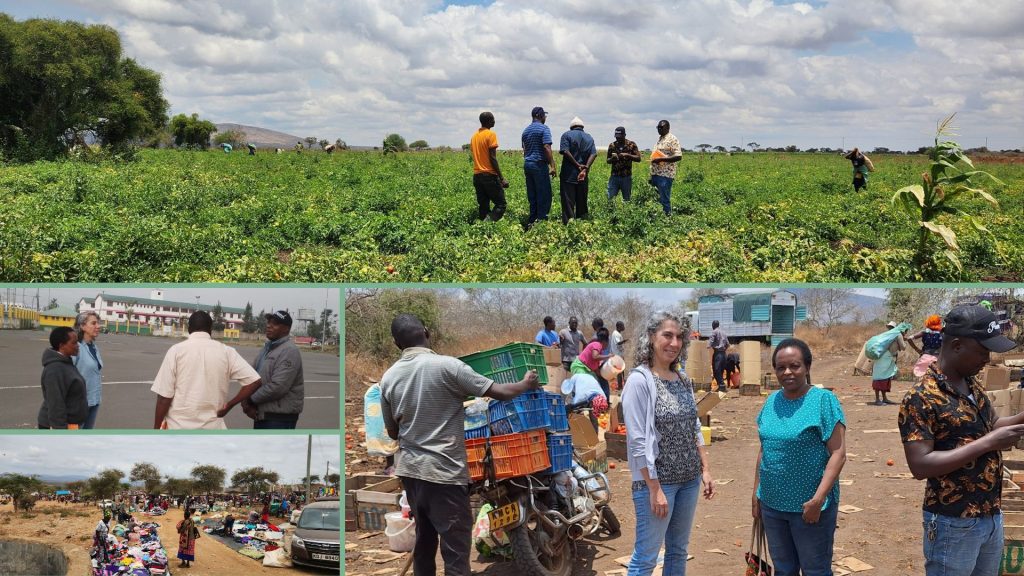
El proyecto INCATA continúa avanzando en su investigación sobre cadenas de valor hortícolas y acuícolas, con visitas de campo recientes a India y Kenia que han generado valiosos conocimientos. Los socios del proyecto colaboraron en actividades de reconocimiento rápido en ambos países.
INCATA Team Conducts Value Chain Studies in India and Kenya

The INCATA project continues to make significant progress in its horticultural and aquaculture value chain research, with recent field visits to India and Kenya yielding valuable insights. Project partners collaborated in rapid reconnaissance activities across both countries.
Inception Workshop, March 2024 – INCATA
Facebook Instagram Twitter Youtube Linkedin Coming soon Facebook Instagram Twitter Youtube Linkedin Nuestras oficinas: Chile: Huelén 10. Providencia, Santiago, Región Metropolitana. (+56-2) 2236 4557 | Fax (+56-2) 2236 4558. Ecuador: Checoslovaquia E9-95 entre Suiza y Moscú. Edificio Eveliza Plaza. Planta Baja. Quito. (+593-2) 5150144. Colombia: Carrera 9 No 72-61 Oficina 303. Bogotá. (+57-1) 2073 850. […]
Presentations in external meetings – INCATA
Facebook Instagram Twitter Youtube Linkedin Coming soon Facebook Instagram Twitter Youtube Linkedin Nuestras oficinas: Chile: Huelén 10. Providencia, Santiago, Región Metropolitana. (+56-2) 2236 4557 | Fax (+56-2) 2236 4558. Ecuador: Checoslovaquia E9-95 entre Suiza y Moscú. Edificio Eveliza Plaza. Planta Baja. Quito. (+593-2) 5150144. Colombia: Carrera 9 No 72-61 Oficina 303. Bogotá. (+57-1) 2073 850. […]
Taller inaugural del proyecto INCATA: Transformando la agricultura en África y Asia
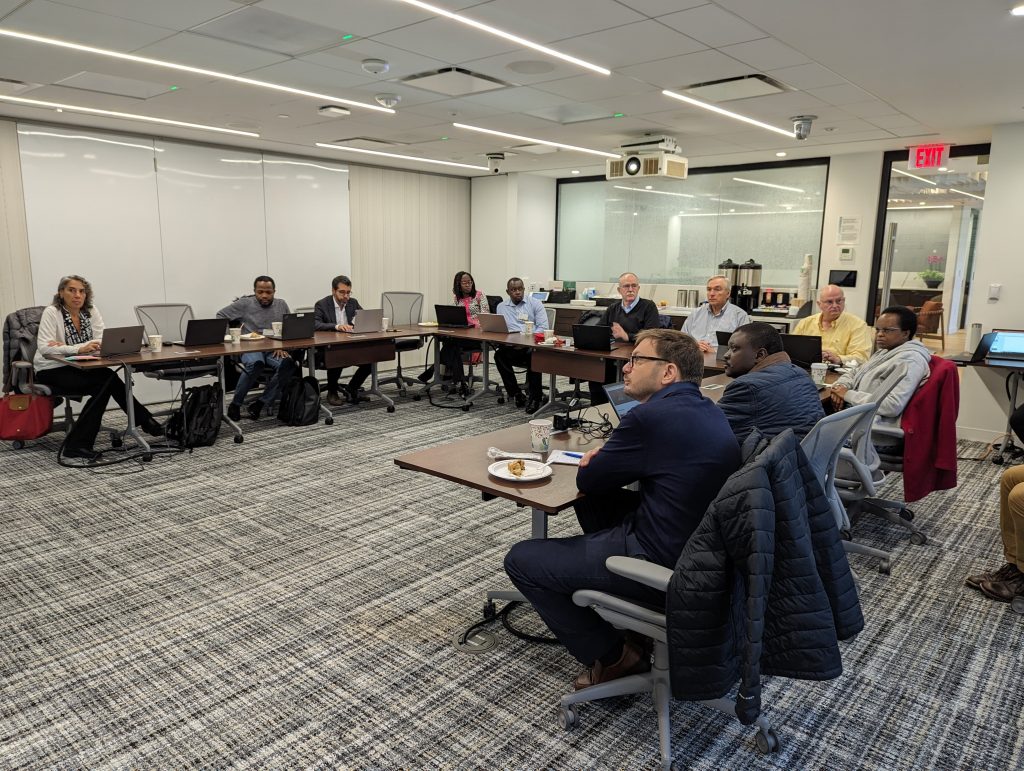
El proyecto INCATA: Linked Farms and Enterprises for Inclusive Agricultural Transformation in Africa and Asia la reunión se realizó del 1 al 5 de abril en las oficinas de la Fundación Bill & Melinda Gates en Washington DC, Estados Unidos.